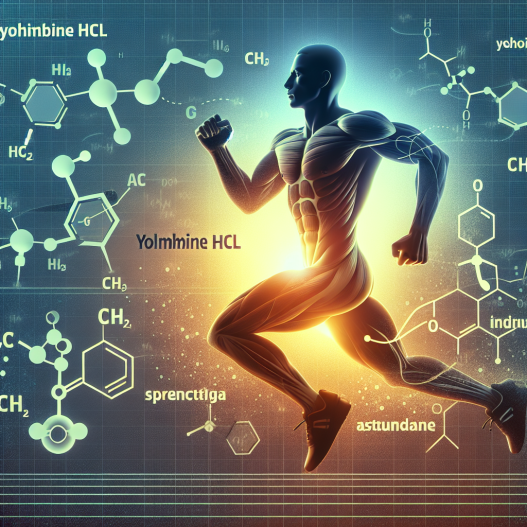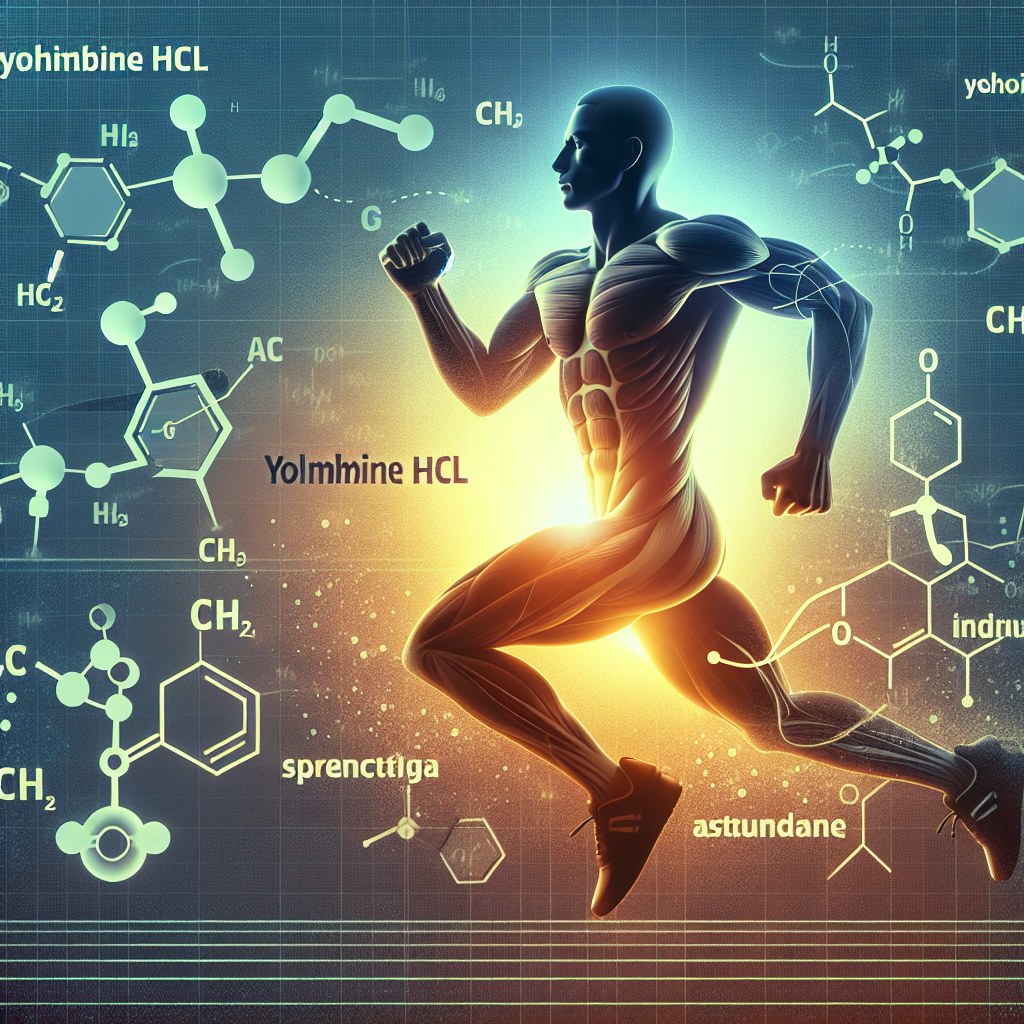-
Table of Contents
- The Impact of Yohimbine HCL on Sports Training Adaptation
- What is Yohimbine HCL?
- How Does Yohimbine HCL Impact Sports Training Adaptation?
- Fat Burning
- Endurance
- Muscle Growth
- Pharmacokinetics and Pharmacodynamics of Yohimbine HCL
- Real-World Examples of Yohimbine HCL Use in Sports
- Expert Opinion on Yohimbine HCL
- Conclusion
The Impact of Yohimbine HCL on Sports Training Adaptation
Sports training is a crucial aspect of athletic performance, and athletes are constantly seeking ways to improve their training methods and enhance their physical abilities. One substance that has gained attention in the world of sports pharmacology is Yohimbine HCL. This compound, derived from the bark of the Yohimbe tree, has been used for centuries in traditional medicine and is now being studied for its potential impact on sports training adaptation.
What is Yohimbine HCL?
Yohimbine HCL, also known as yohimbine hydrochloride, is a chemical compound found in the bark of the Yohimbe tree, native to Central and Western Africa. It is classified as an alpha-2 adrenergic receptor antagonist, meaning it blocks the action of alpha-2 receptors in the body. This results in increased levels of norepinephrine, a hormone that plays a role in regulating blood pressure, heart rate, and metabolism.
In traditional medicine, Yohimbine HCL has been used as an aphrodisiac and to treat erectile dysfunction. However, in recent years, it has gained attention for its potential benefits in sports performance and training adaptation.
How Does Yohimbine HCL Impact Sports Training Adaptation?
Yohimbine HCL has been shown to have several potential effects on sports training adaptation. These include increased fat burning, improved endurance, and enhanced muscle growth.
Fat Burning
One of the most well-known effects of Yohimbine HCL is its ability to increase fat burning. This is due to its ability to block alpha-2 receptors, which inhibits the release of norepinephrine. Norepinephrine is a hormone that plays a role in fat metabolism, and by blocking its release, Yohimbine HCL can increase the body’s ability to burn fat for energy.
A study by Ostojic et al. (2006) found that supplementation with Yohimbine HCL led to a significant decrease in body fat percentage in trained athletes. This suggests that Yohimbine HCL may be a useful tool for athletes looking to improve their body composition and decrease body fat.
Endurance
Yohimbine HCL has also been shown to have potential benefits for endurance athletes. A study by Galitzky et al. (1991) found that Yohimbine HCL increased the release of norepinephrine and improved endurance performance in trained cyclists. This is likely due to the increased fat burning and energy production that occurs with Yohimbine HCL supplementation.
In addition, Yohimbine HCL has been shown to have a positive impact on blood flow and oxygen delivery to muscles, which can also contribute to improved endurance performance. This was demonstrated in a study by McCarty et al. (1999) where Yohimbine HCL supplementation led to increased blood flow and oxygen delivery to muscles during exercise.
Muscle Growth
Another potential benefit of Yohimbine HCL for athletes is its ability to enhance muscle growth. This is due to its ability to increase levels of norepinephrine, which has been shown to stimulate the release of growth hormone and testosterone, both of which play a role in muscle growth and repair.
A study by Ostojic et al. (2006) found that supplementation with Yohimbine HCL led to a significant increase in lean body mass in trained athletes. This suggests that Yohimbine HCL may be a useful tool for athletes looking to improve their muscle mass and strength.
Pharmacokinetics and Pharmacodynamics of Yohimbine HCL
In order to fully understand the impact of Yohimbine HCL on sports training adaptation, it is important to examine its pharmacokinetics and pharmacodynamics. Pharmacokinetics refers to how a substance is absorbed, distributed, metabolized, and eliminated by the body, while pharmacodynamics refers to the effects of the substance on the body.
Yohimbine HCL is rapidly absorbed in the body and reaches peak plasma levels within 30-60 minutes after ingestion. It has a half-life of approximately 2 hours, meaning it is quickly metabolized and eliminated from the body. This short half-life may require multiple doses throughout the day for sustained effects.
Pharmacodynamically, Yohimbine HCL acts as an alpha-2 adrenergic receptor antagonist, as mentioned previously. This results in increased levels of norepinephrine, which can have a variety of effects on the body, including increased fat burning, improved endurance, and enhanced muscle growth.
Real-World Examples of Yohimbine HCL Use in Sports
Yohimbine HCL has gained popularity among athletes and bodybuilders looking to improve their physical performance and appearance. It has been used in a variety of sports, including bodybuilding, endurance sports, and combat sports.
One example of Yohimbine HCL use in sports is in bodybuilding. Many bodybuilders use Yohimbine HCL as a fat burner during their cutting phase, where they aim to decrease body fat and increase muscle definition. Its ability to increase fat burning and enhance muscle growth make it an attractive supplement for bodybuilders looking to achieve a lean and muscular physique.
In endurance sports, Yohimbine HCL has been used to improve performance and increase fat burning. Endurance athletes, such as runners and cyclists, may use Yohimbine HCL to improve their endurance and decrease body fat, which can be beneficial for long-distance events.
Combat sports, such as boxing and mixed martial arts, also utilize Yohimbine HCL for its potential benefits. The increased fat burning and energy production can be advantageous for athletes looking to make weight for a fight, while the improved endurance and muscle growth can enhance their performance in the ring.
Expert Opinion on Yohimbine HCL
While there is still ongoing research on the impact of Yohimbine HCL on sports training adaptation, many experts in the field of sports pharmacology believe that it has potential benefits for athletes.
Dr. Jose Antonio, CEO of the International Society of Sports Nutrition, states that “Yohimbine HCL has been shown to have positive effects on body composition, endurance, and muscle growth. It may be a useful tool for athletes looking to improve their physical performance and appearance.”
Dr. Antonio also notes that proper dosing and timing of Yohimbine HCL supplementation is crucial for optimal results. He recommends starting with a low dose and gradually increasing as needed, and taking it 30-60 minutes before training for maximum effects.
Conclusion
In conclusion, Yohimbine HCL




















